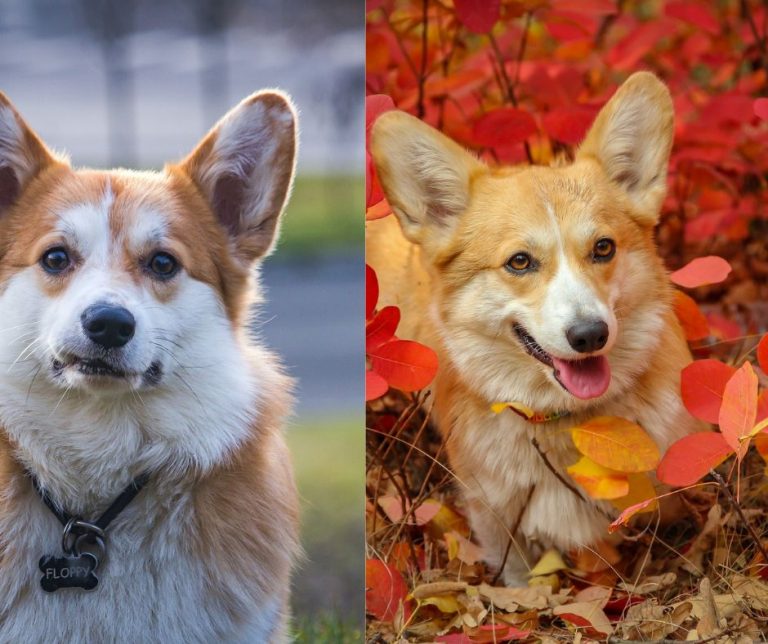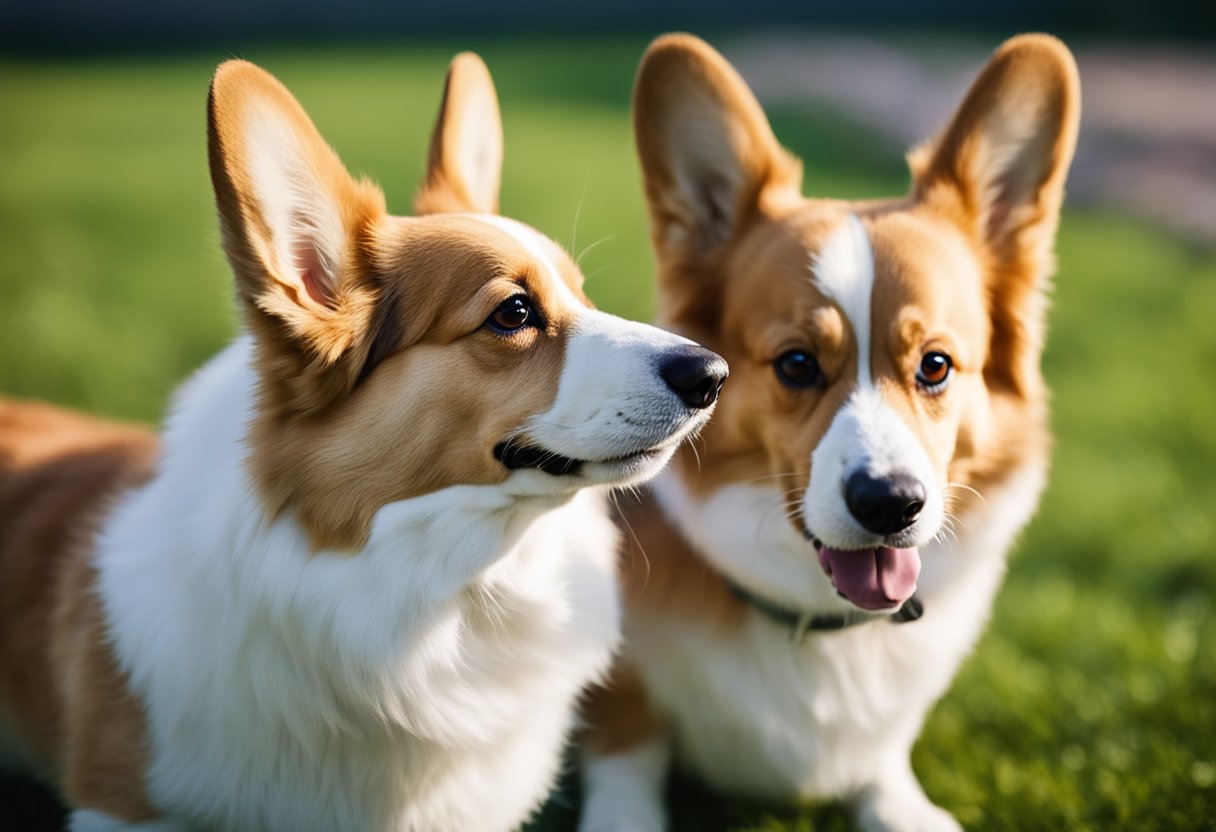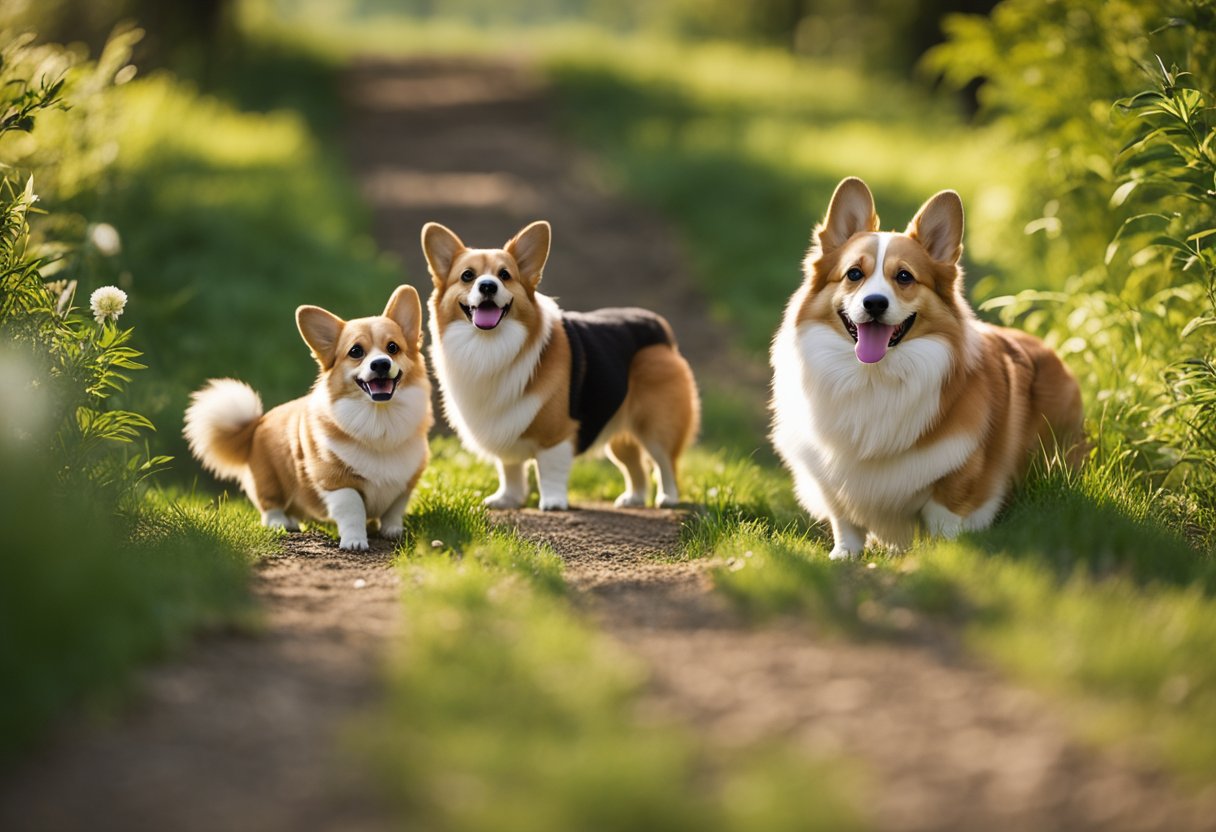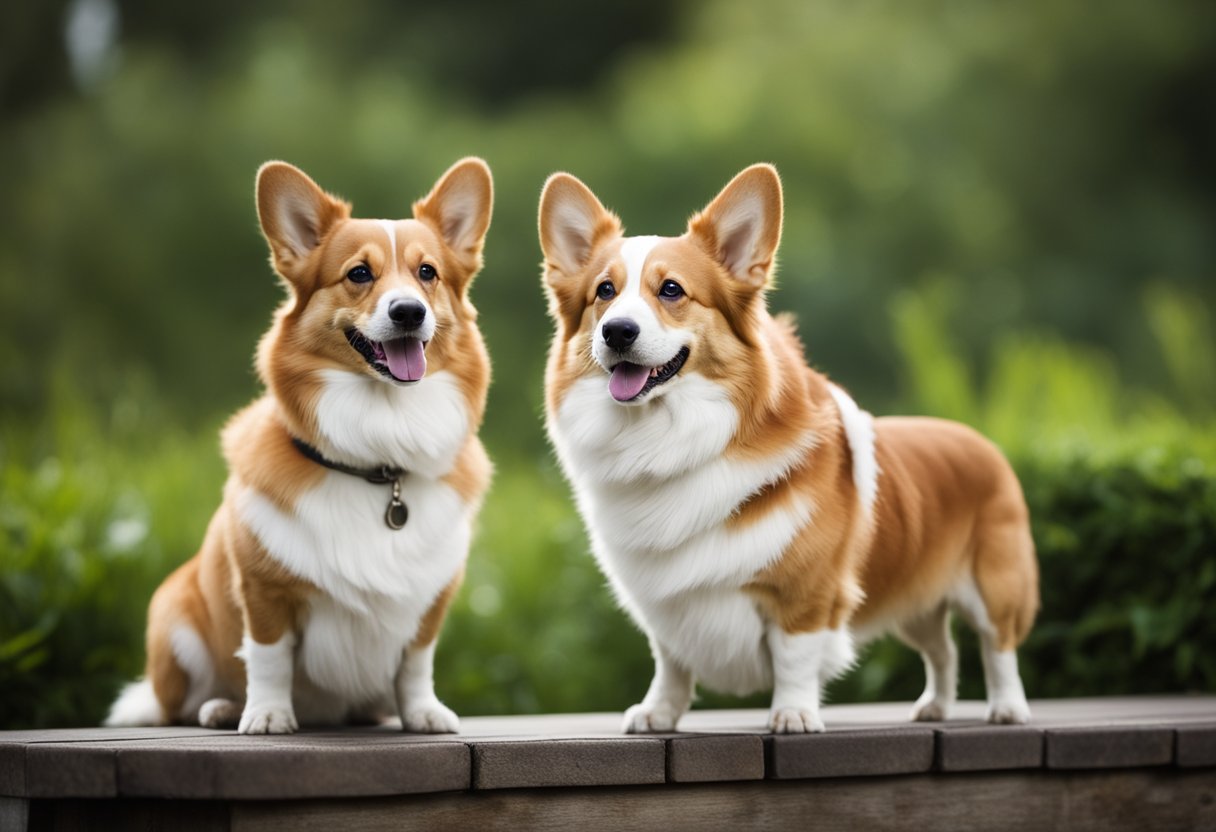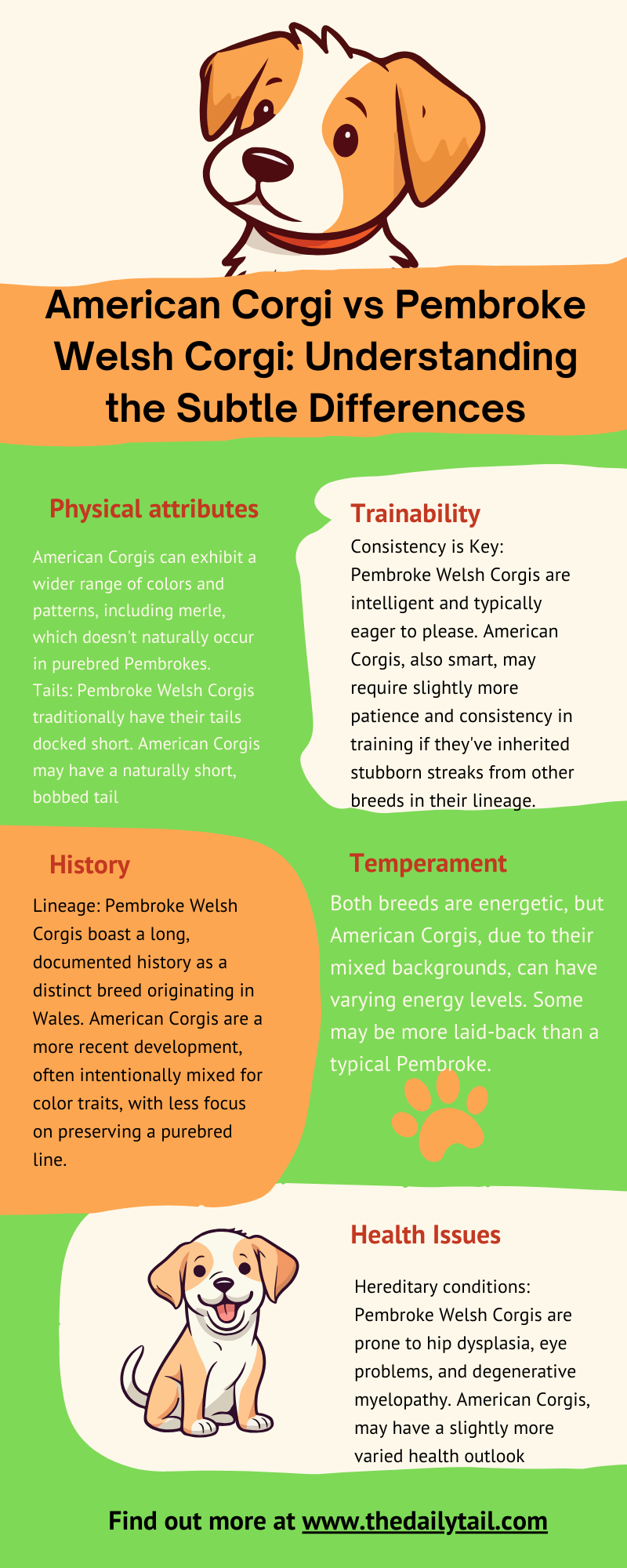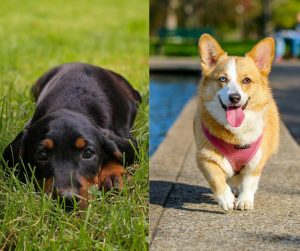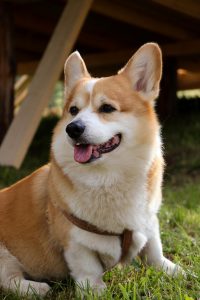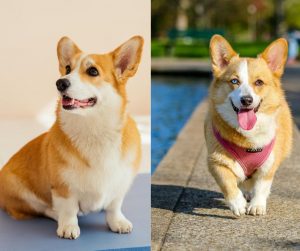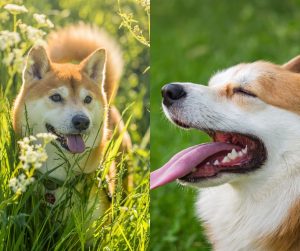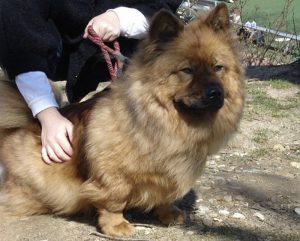The American Corgi and the Pembroke Welsh Corgi may share a name and a strikingly similar appearance, but they are indeed separate breeds with their own unique characteristics. Corgis, in general, are known for their short stature, sturdy build, and energy, traits that have endeared them to dog lovers around the world, including royalty.
The Pembroke Welsh Corgi, in particular, has gained fame as the preferred breed of Queen Elizabeth II, which has contributed to their popularity. So, let’s take a look at the American Corgi vs Pembroke Welsh Corgi comparison.
While both the American Corgi puppy and the Pembroke Welsh Corgi are small herding dogs, they differ in several respects, including their breeding history and physical characteristics. The American Corgi is a crossbreed combining the Pembroke Welsh Corgi with the Cardigan Welsh Corgi.
This relatively new breed was created to combine the desirable traits of both Corgi types. On the other hand, the Pembroke Welsh Corgi is a purebred with a history dating back over a thousand years in Wales, where they were bred for herding cattle and other livestock.
One key difference between the two breeds is their tail. The Pembroke is often known for having a shorter tail or even a docked tail, a trait that has become a breed standard, while the American Corgi tends to retain the longer tail of the Cardigan Welsh Corgi from which it descends.
In addition to the tail, these Corgi breeds can vary slightly in weight and sometimes in coloration and coat markings, making it possible for enthusiasts and experts to tell them apart.
After three decades of sharing my life with dogs, I’ve discovered the often-overlooked differences between American Corgis and their purebred Pembroke Welsh counterparts. Let’s take a deeper look into this dog breed comparison.
Overview of Corgi Breeds
Corgis are renowned for their compact stature and lively personality, with the Pembroke Welsh Corgi and Cardigan Welsh Corgi being the most recognized purebred breeds. They originate from Wales and have distinct histories and characteristics.
History and Origin of Corgis
Purebred Pembroke Welsh Corgi: This breed has its roots in Pembrokeshire, Wales. The Pembroke Welsh Corgi is noted for its association with the British monarchy, particularly Queen Elizabeth II. Historically used as a herding dog for cattle, the Pembroke is characterized by its docked tail and fox-like appearance.
Cardigan Welsh Corgi: The older of the two breeds, the Cardigan Welsh Corgi hails from Cardiganshire in Wales. It has been used for herding as well but retains a longer tail. The breed has a more substantial bone structure compared to the Pembroke.
Recognized Corgi Breeds
The American Kennel Club (AKC) recognizes two main Corgi breeds:
- Pembroke Welsh Corgi: Officially recognized by the AKC in 1934, this breed is more popular than its Cardigan cousin. Without a tail and with a generally smaller build, they are identifiable by their straighter legs and the lack of heavy bone structures like the Cardigan.
- Cardigan Welsh Corgi: Recognized by the AKC in 1935, one year later than the Pembroke, this breed exhibits a tail and a wider variety of coat colors.
A newer variety, known as the American Corgi, is a crossbreed of the Pembroke and Cardigan. While not a purebred dog, it combines characteristics from both recognized breeds and comes in all the standard colors and coat patterns associated with its parent breeds. The American Corgi has yet to be officially recognized by the AKC.
Distinctive Features of American and Pembroke Welsh Corgis
The American Corgi vs Pembroke Welsh Corgi comparison may display distinct physical traits and coat variations, offering unique characteristics that set them apart. Recognizing these differences can help potential owners make informed decisions when considering either breed.
General Appearance
The American Corgi typically exhibits a blend of traits due to its crossbreed nature, often showing physical characteristics from both of its parent breeds. Conversely, the purebred Pembroke Welsh Corgi presents a more uniform appearance, adhering to the specific breed standard recognized by the American Kennel Club (AKC).
Physical Differences
- Size: Pembroke Welsh Corgis show more consistency in size, generally standing about 10-12 inches at the shoulder and weighing between 25-30 pounds. American Corgis may vary more significantly in size due to their mixed heritage
- Tail: Pembrokes are known for their trademark short or docked foxlike tail, while American Corgis may have tails of various lengths
- Ears: Both breeds possess erect ears, but the American Corgi’s may reflect the characteristics of its non-Corgi parent breed
- Bodies: Their elongated bodies and short legs are iconic, with both breeds showcasing this distinctive, yet endearingconformation.
Coat Variations
- American Corgi puppy: Known for a wider range of coat colors including, but not limited to, blue merle and brindle. They can also exhibit unique patterns such as the merle coat
- Pembroke Welsh Corgi: Their coat colors are usually more specific, with shades such as red, sable, tricolor, and black and white being quite common. Tan points may also be present
The Pembroke Welsh Corgi’s coat is generally thick and weather-resistant, while the American Corgi might have a coat that reflects traits from its non-Corgi parent, possibly resulting in a variation in texture and density.
American Corgi vs Pembroke Welsh Corgi Personality and Behavior
Corgis are known for their keen intelligence and lively personality. This section delves into the distinctive temperaments of the American Corgi and the Pembroke Welsh Corgi, as well as their innate herding behaviors.
Temperament Comparison
The American Corgi, a crossbreed of the Pembroke Welsh Corgi and Cardigan Welsh Corgi, tends to have a more laid-back demeanor. They are affectionate and intelligent, making them easy to train. Recognized for their adaptability, they are often considered less bossy and exhibit less herding behavior than their purebred counterparts.
In contrast, the Pembroke Welsh Corgi is known for being outgoing and playful. Their personality is often described as family-friendly and affectionate. They are highly intelligent dogs that are always eager to please, which also makes them good companions.
Herding Instincts and Behaviour
The Pembroke Welsh Corgi has strong herding instincts, a trait that can be traced back to their history as cattle herding dogs. They are known to be assertive in their herding tasks, sometimes even using their bodies to nudge cattle and other pets as a means of control.
While the American Corgi retains some herding traits, they are generally more relaxed. Their herding behavior is less prevalent, making them suitable for families that are looking for a less active herding dog. Both breeds, however, require ample exercise to keep their intelligent minds stimulated and to manage any herding tendencies that could arise in a home setting.
Health and Lifespan
When comparing the American Corgi and the Pembroke Welsh Corgi, it is essential to consider their health concerns and lifespan to understand their long-term well-being.
General Health Concerns
American Corgi: This breed can be predisposed to certain genetic issues, much like its Pembroke Welsh counterpart. While comprehensive health information specific to the American Corgi may be less documented due to its status as a less recognized breed, it can be prone to similar conditions that affect Corgis in general.
Pembroke Welsh Corgi: They have a propensity for several health issues. These include:
- Hip Dysplasia: A genetic condition affecting the hip joint
- Elbow Dysplasia: A similar condition affecting the elbow joint
Owners should maintain routine veterinary visits to monitor and address any health and wellness concerns promptly.
Expected Lifespan
| Breed | Average Lifespan |
|---|---|
| American Corgi | 10-13 years |
| Pembroke Welsh Corgi | 12-13 years |
Both breeds generally enjoy a similar lifespan, but the Pembroke Welsh Corgi is recognized as having a slightly longer average lifespan, with most reaching about 12 to 13 years with proper care. Regular exercise and a balanced diet contribute to their overall health and longevity.
Care Requirements
The American Corgi and the Pembroke Welsh Corgi share similar care requirements, though differences in grooming needs and energy levels should be noted to maintain their health and well-being.
Grooming Needs
American Corgi: The American Corgi’s grooming needs can vary, as their coat may have the unique merle pattern inherited from the Cardigan Welsh Corgi side. They require regular brushing—at least once a week—to manage shedding and prevent matting. Due to varying coat colors and patterns, certain coat types might need more frequent grooming.
Pembroke Welsh Corgi: Pembroke Welsh Corgis possess a thick, double coat that sheds year-round and intensifies during the change of seasons. They benefit from a consistent grooming schedule, which includes brushing 2-3 times a week to keep their coat healthy and to reduce the amount of loose fur in the home.
Exercise and Energy Levels
American Corgi: This breed displays a lively and athletic demeanor, necessitating daily exercise to match their energy levels. Ideal exercise consists of walks, play sessions, and ample yard time to prevent boredom and maintain physical fitness.
Pembroke Welsh Corgi: Likewise, the Pembroke is an active and spirited breed; daily physical activity is essential to keep them happy and healthy. They excel in various dog sports and activities due to their high energy levels, thus requiring consistent exercise routines.
Both breeds benefit greatly from mental stimulation in addition to physical exercise to prevent destructive behaviors and to keep their intelligent minds engaged.
Breeding and Genetics
When distinguishing between American Corgis and Pembroke Welsh Corgis, understanding their breeding and genetic makeup is crucial. These facets play a significant role in the dogs’ appearance, health, and the breed’s lineage.
Purebred versus Crossbreed
Purebred Corgis refer to Pembroke Welsh Corgis, which have a documented pedigree recognized by kennel clubs like the AKC. They are bred with a focus on maintaining the specific characteristics that define the breed, including size, temperament, and appearance.
- Breeding: Strict standards are upheld for producing purebred Pembroke Welsh Corgis
Crossbreeds, such as the American Corgi, originate from a mix of different breeds. In the case of the American Corgi, the crossbreed is a result of breeding a Pembroke Welsh Corgi with a Cardigan Welsh Corgi.
- Designer Dogs: These crossbreeds are sometimes referred to as designer dogs and are bred with the intention of combining the desirable traits of two different breeds.
Understanding the Merle Gene
The merle gene is responsible for creating mottled patches of color in a dog’s coat and is present in many American Corgis due to their Cardigan Welsh Corgi ancestry.
- Colors: The merle coat pattern features an intermingling of light and dark shades which can vary widely, making each merle-coated dog’s coloring quite unique
Breeding dogs that both carry the merle gene can bring about health concerns, such as vision and hearing problems, so responsible breeding practices are essential to prevent doubling up on the merle gene in offspring.
- Genetics: Careful genetic consideration is needed when breeding merle-coated dogs to ensure the health and well-being of the puppies
Corgis in Popular Culture
Corgis have gained significant prominence in popular culture, largely due to their royal connections and suitability as family pets.
Royal Association with Pembroke Welsh Corgis
The Pembroke Welsh Corgi became synonymous with royalty after Queen Elizabeth II’s affection for the breed became public. She has owned more than 30 Pembroke Welsh Corgis during her reign, which significantly raised the profile of the breed. These dogs are often associated with royalty and elegance due to their long-standing presence in Buckingham Palace. The breed’s popularity soared as they appeared frequently in publicity shots with the Queen and in media coverage of the royal family.
Corgis as Family Pets
Both the American Corgi and the Pembroke Welsh Corgi are known for being family-friendly and good with children, making them popular choices as family pets. Their small stature and amiable nature suit a pet-friendly home environment. Corgis are also known for their ability to adapt to living with families in various settings, from apartments to houses with yards. Their energetic and playful demeanor, coupled with a protective instinct, makes them particularly well-loved in households across Pembrokeshire and beyond.
Choosing a Corgi
When selecting a Corgi, potential owners should consider breed differences, such as the Pembroke Welsh Corgi’s higher energy levels and the American Corgi’s mellower temperament. It’s important to analyze lifestyle compatibility and source your pet responsibly, whether from breeders or shelters.
Selecting the Right Corgi for Your Lifestyle
The Pembroke Welsh Corgi and the American Corgi bring distinct characteristics to a household. Pembroke Welsh Corgis are known for their:
- Energy levels: High; they require regular exercise
- Behavior: Herding instincts make them active and alert
- Personality: Outgoing and friendly, making them highly family-friendly
- Suitability: Best for those who lead an active lifestyle and can provide ample exercise and stimulation
Alternatively, the American Corgi, a crossbreed, typically displays traits such as:
- Energy levels: Moderate, slightly more laid-back than Pembrokes
- Behavior: They may exhibit less herding behavior, aligning with a more relaxed demeanor
- Personality: Adaptable, often proving easy to train and good with families
- Suitability: A solid choice for less active households or those with small children

